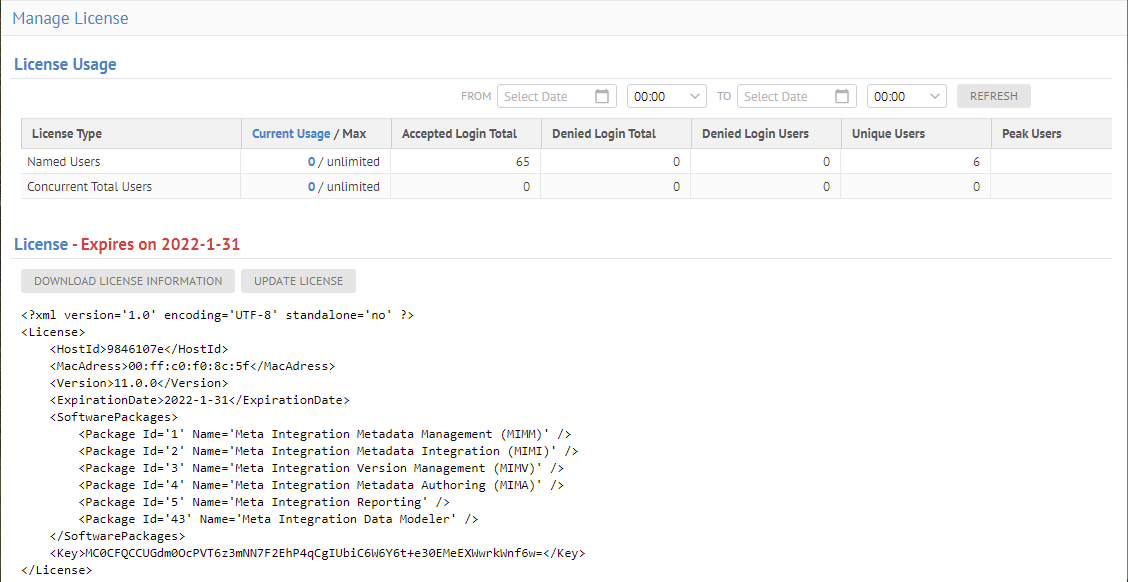Managing licenses
Consumer and Producer users
Talend Data Catalog allows you to define producer and consumer users.
By default, all users are consumer users.
If you are assigned to a role with capabilities associated with a Producer type such as Object Administrator, you are counted as a Producer on the license side.
If you are assigned to a role with capabilities associated with a Consumer type such as Application Designer, you are counted as a Consumer on the license side.
License Usage
In License Usage, you can see the number of active users and the maximum number of active users who can access the tool simultaneously, depending on your Talend Data Catalog license.
In addition, the duration of usage of the current license is also presented, and displayed in red if it will expire soon.

| Statistics | Description |
|---|---|
| Current Usage / Max |
|
| Accepted Login Total | The total number of login sessions accepted (authenticated and authorized) |
| Denied Login Total | The total number of login sessions denied (not authenticated or not authorized) |
| Denied Login Users | The count of unique users in the set of login sessions denied |
| Unique Users | The count of unique users overall from the set of login sessions attempted |
| Peak Users | The peak number of actively logged in users by license type |
The Administrator user does not count among the maximum number of active users and can sign in at any time.
If you have an unlimited number of users with your license then any user can log in multiple times with the same username.
Did this page help you?
If you find any issues with this page or its content – a typo, a missing step, or a technical error – let us know how we can improve!
